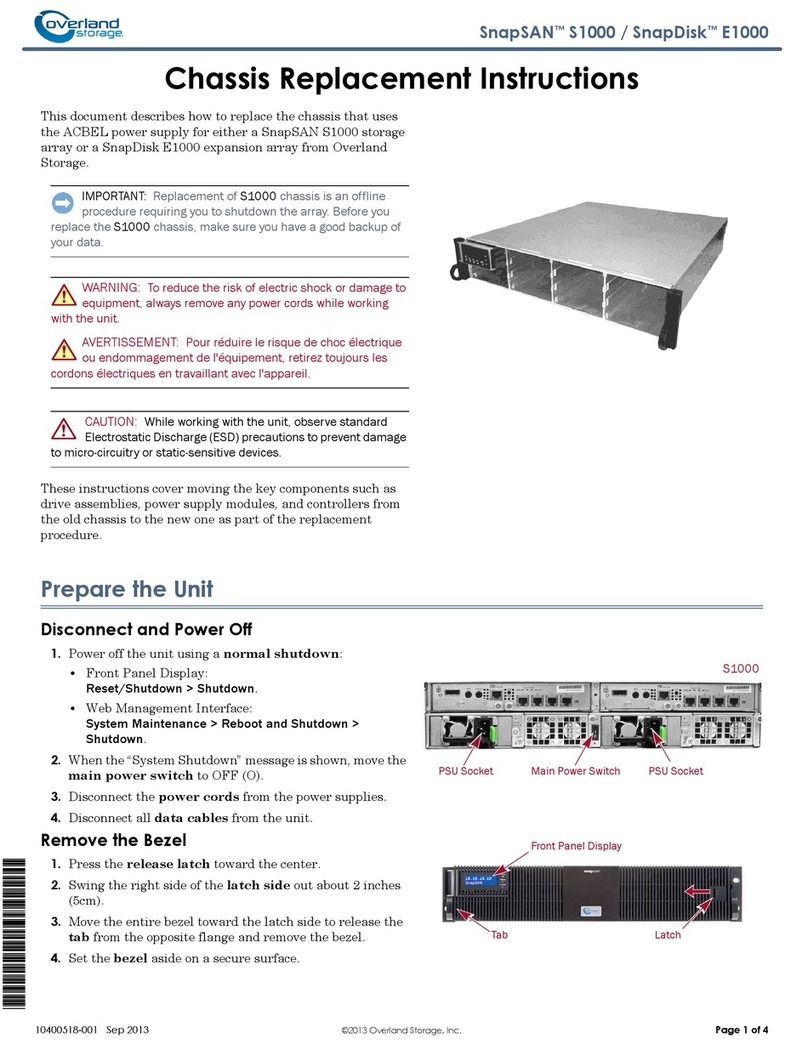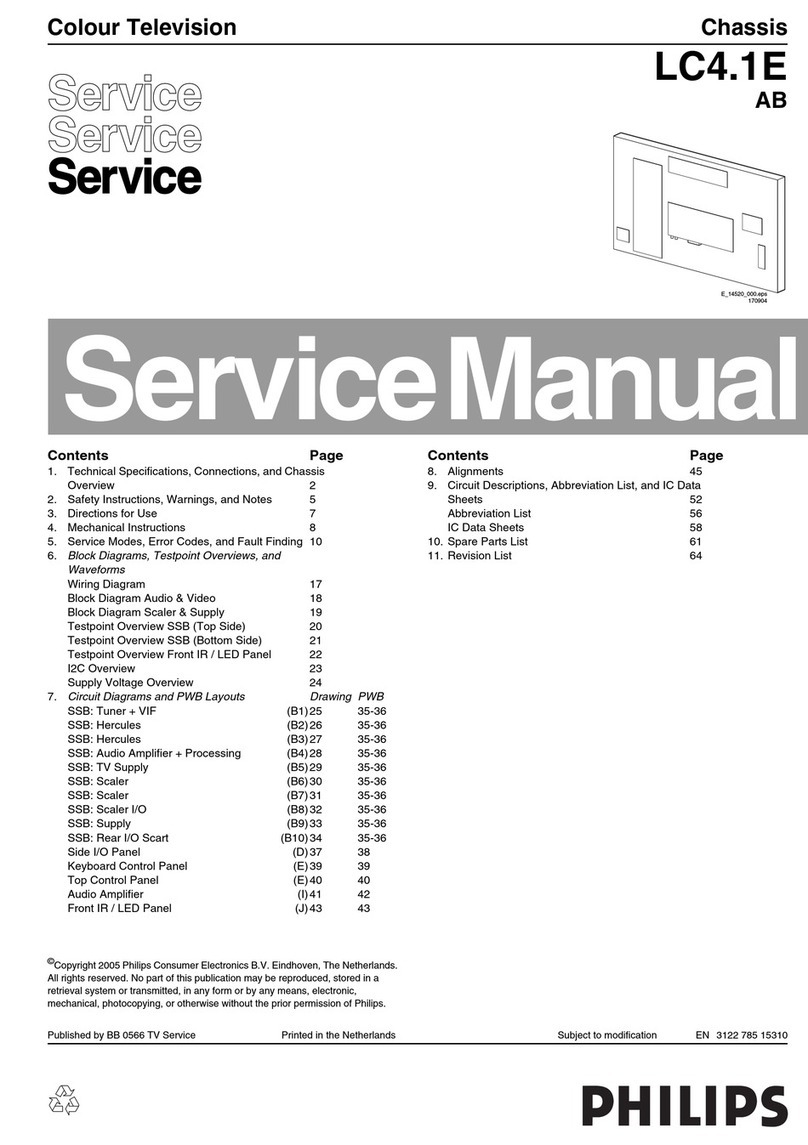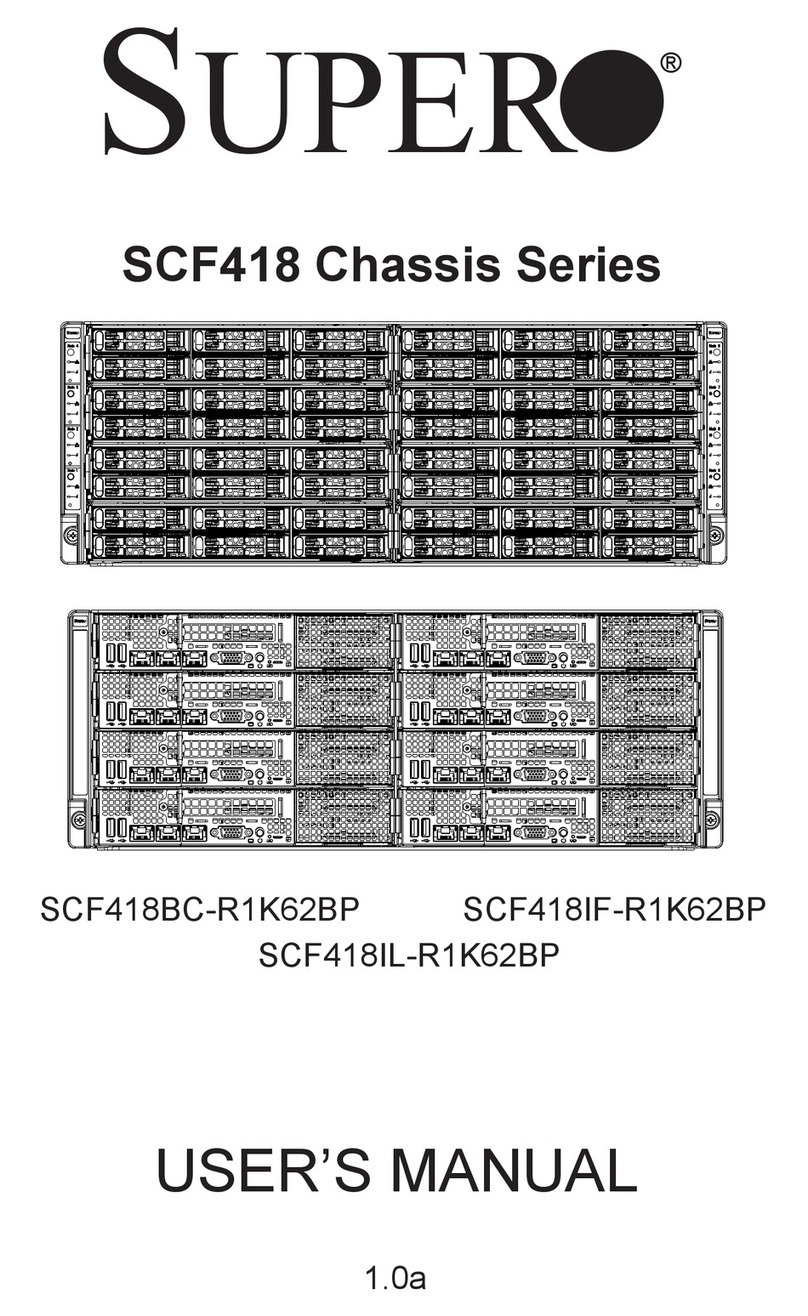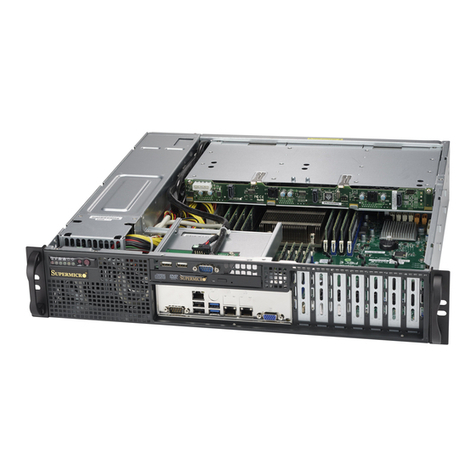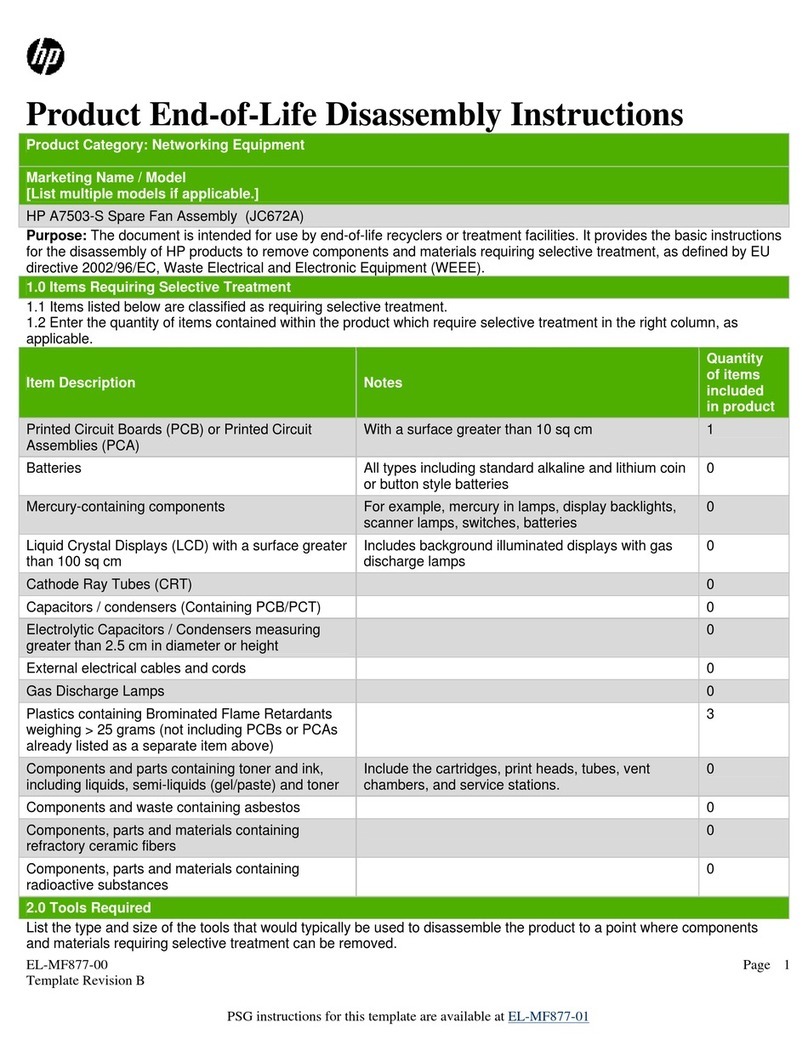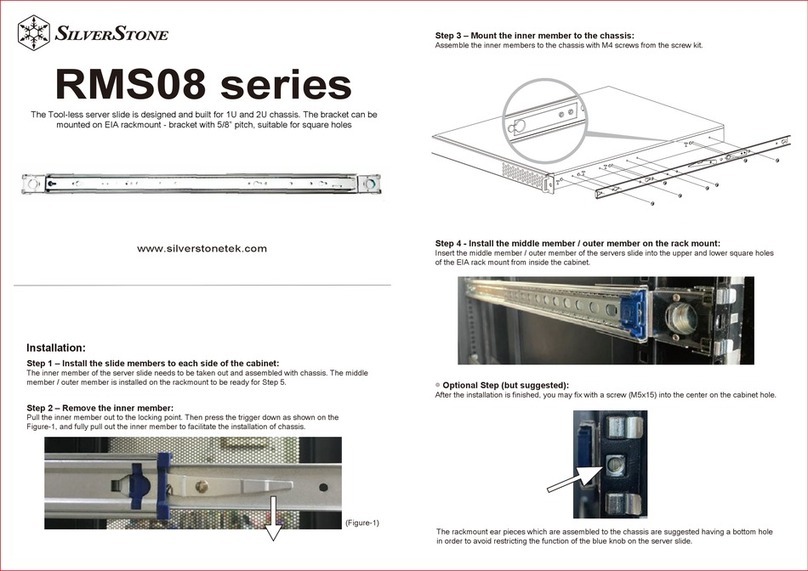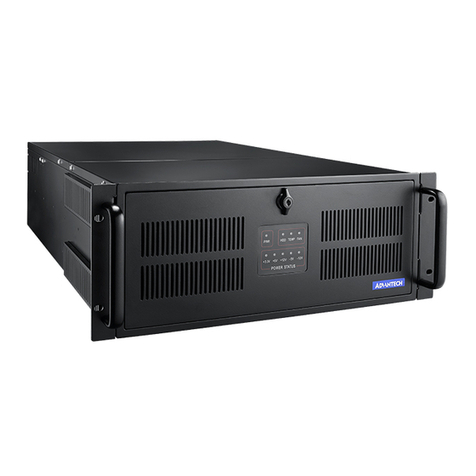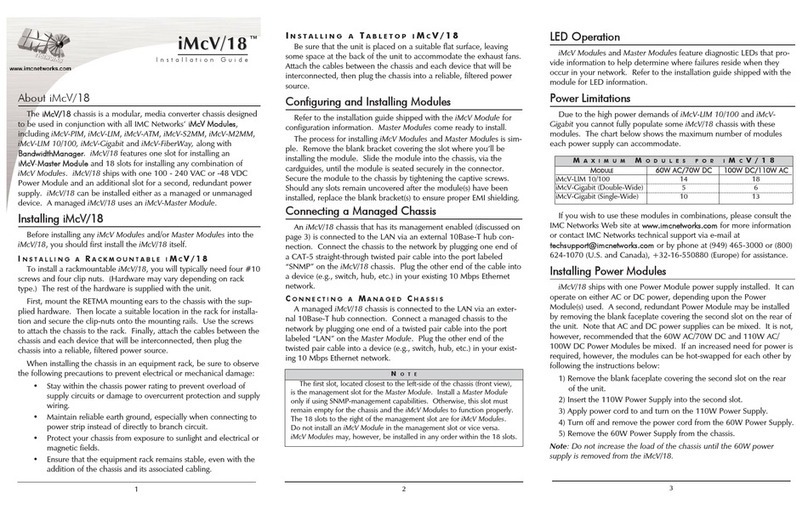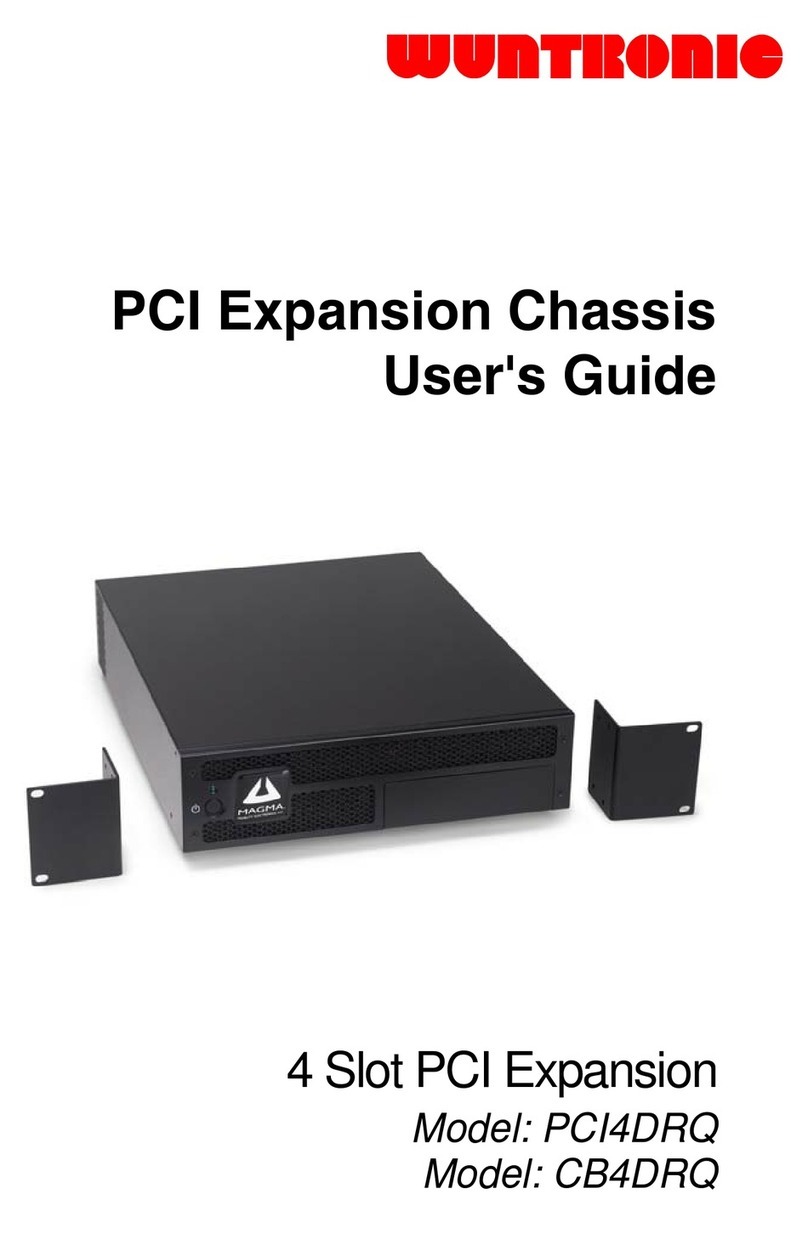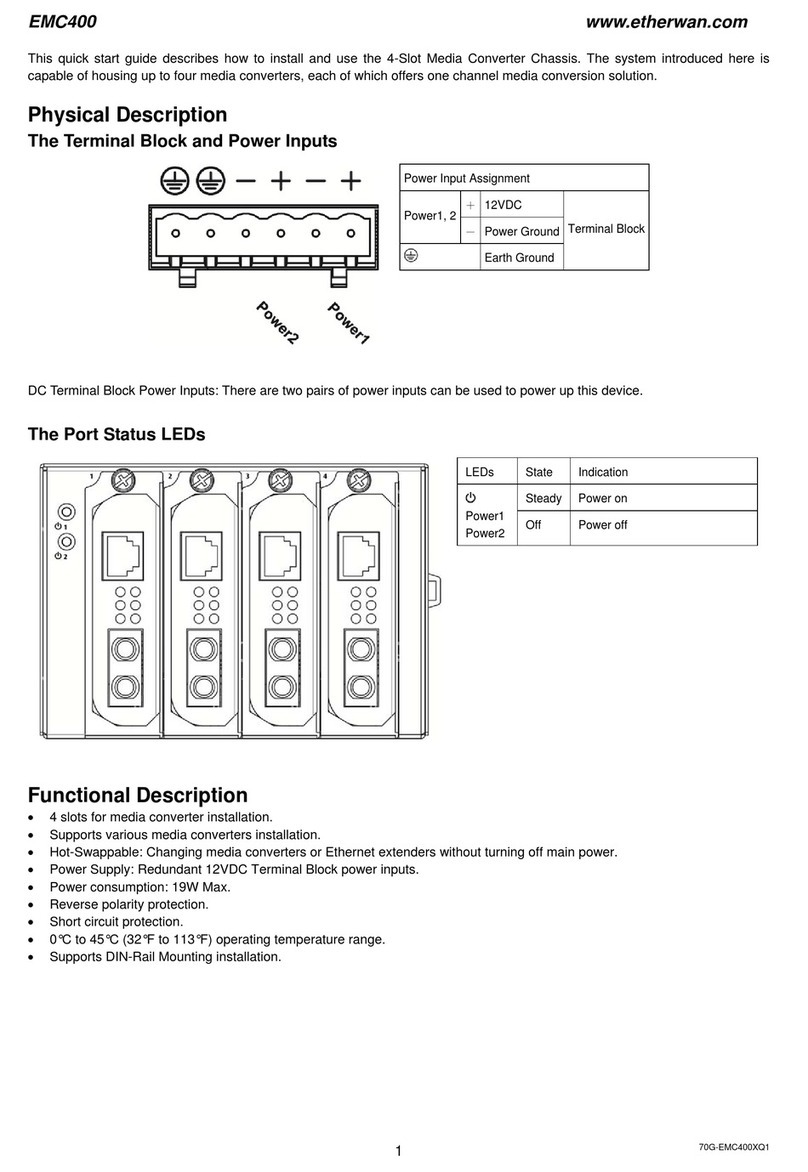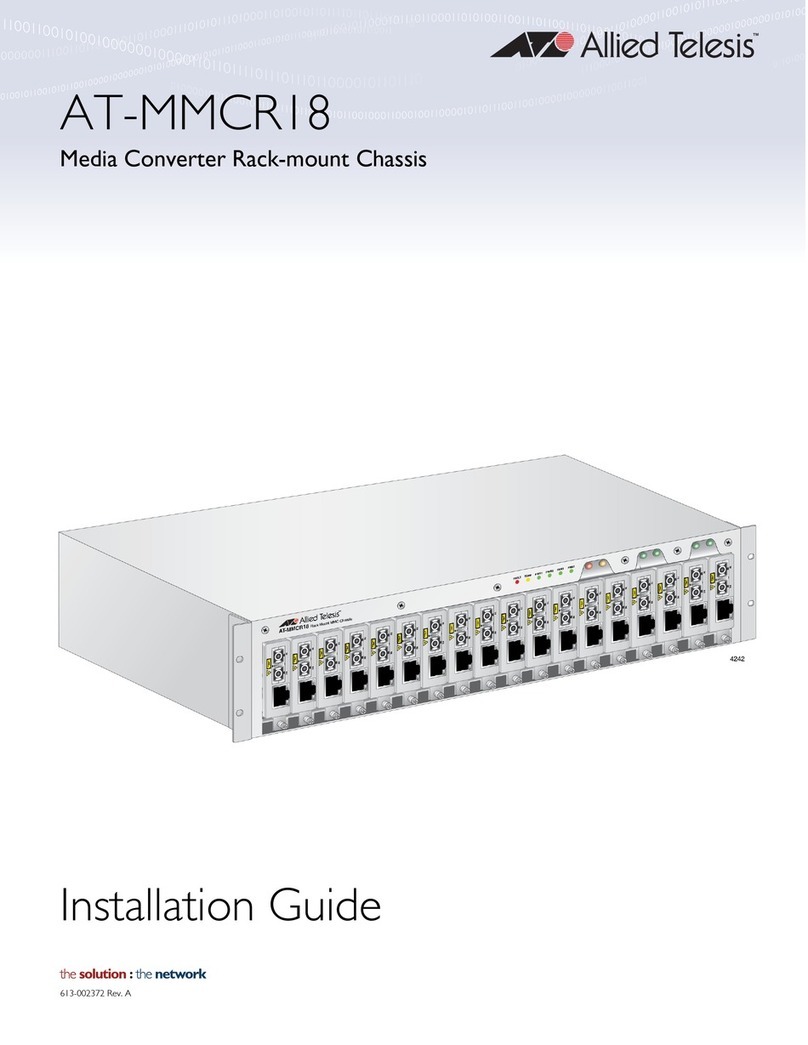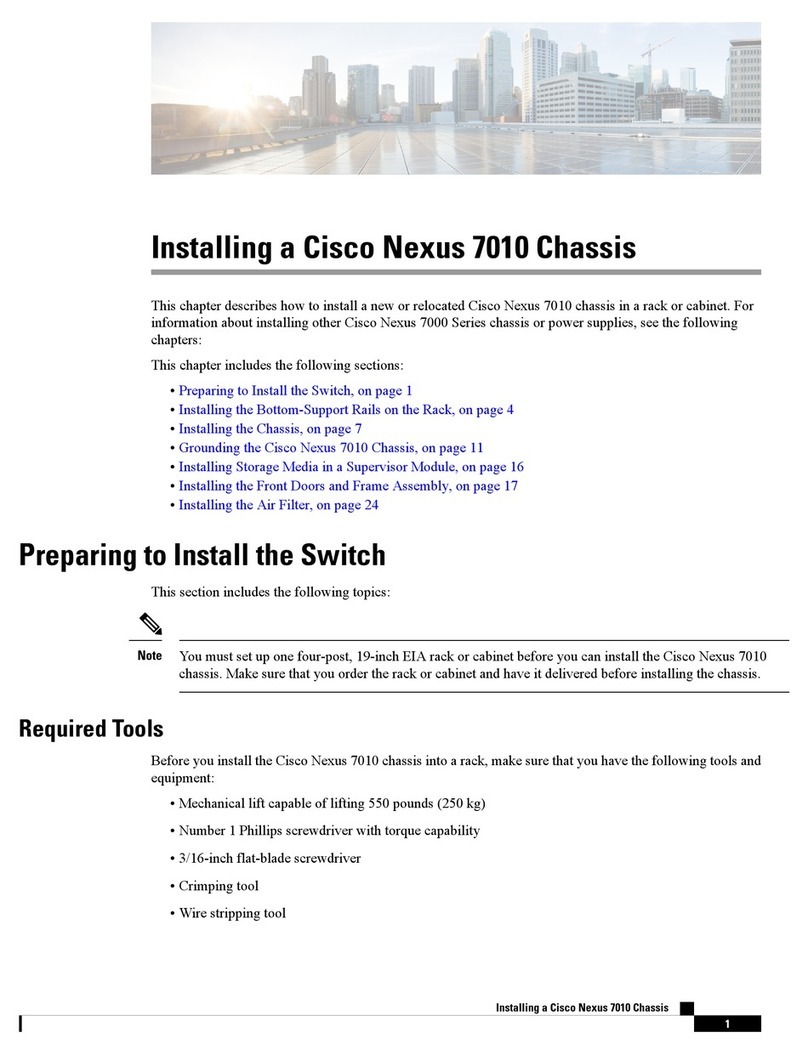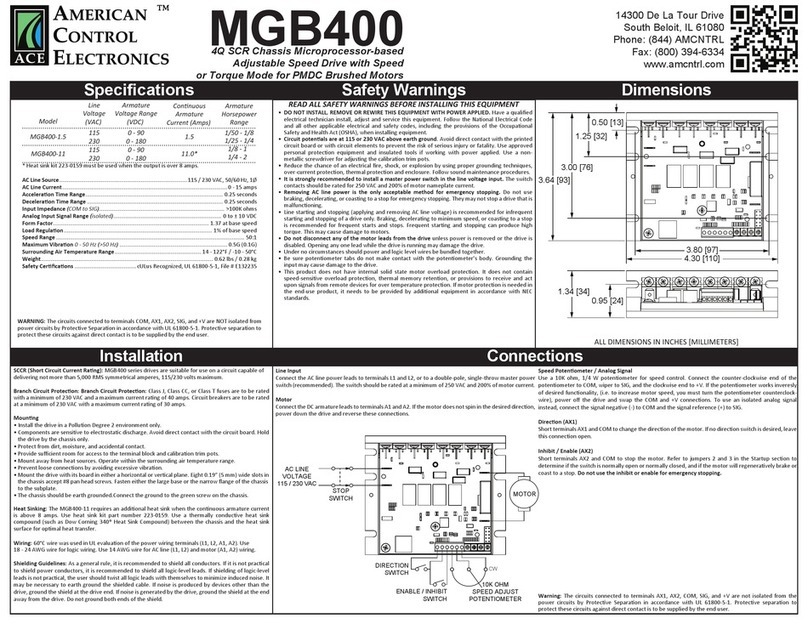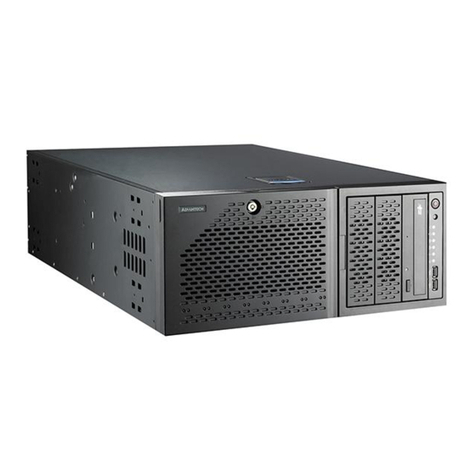Slide-in Modules Installation
Installing the Media Converter Slide-in Modules
The instructions to install the media converter slide-in modules into the
ME-10-T chassis are as follows:
1. The slide-in modules can be installed in an empty slot of the
chassis.
2. Before installing a slide-in module, make sure the front plate has
been removed.
3. Align the slide-in module with the chassis installation slot so that
the panel fastener screw is at the top of the module.
4. Carefully insert the slide-in module into the slot while aligning the
module’s circuit board as per the installation guide.
5. Ensure that the slide-in module is firmly fitted inside the chassis.
6. Push in and rotate the attached panel fastener screw clockwise to
secure the module to the chassis.
Replacing the Media Converter Slide-in Modules
To replace a media converter slide-in module in the ME-10-T chassis:
1. The media converter slide-in module can be hot-swapped, which
means the chassis doesn’t have to power off during the installation or
when the module is being removed.
2. Remove the slide-in module that needs to be replaced by loosening
the panel fastener screw that secures the module to the chassis. Slide the
module out from the chassis.
3. Align the replacement slide-in module with the chassis installation
slot so that the panel fastener screw is at the top of the module.
4. Carefully insert the slide-in module into the slot while aligning the
module’s circuit board as per the installation guide.
5. Ensure the slide-in module is firmly fitted inside the chassis.
6. Push in and rotate the attached panel fastener screw clockwise to
secure the module to the chassis.
